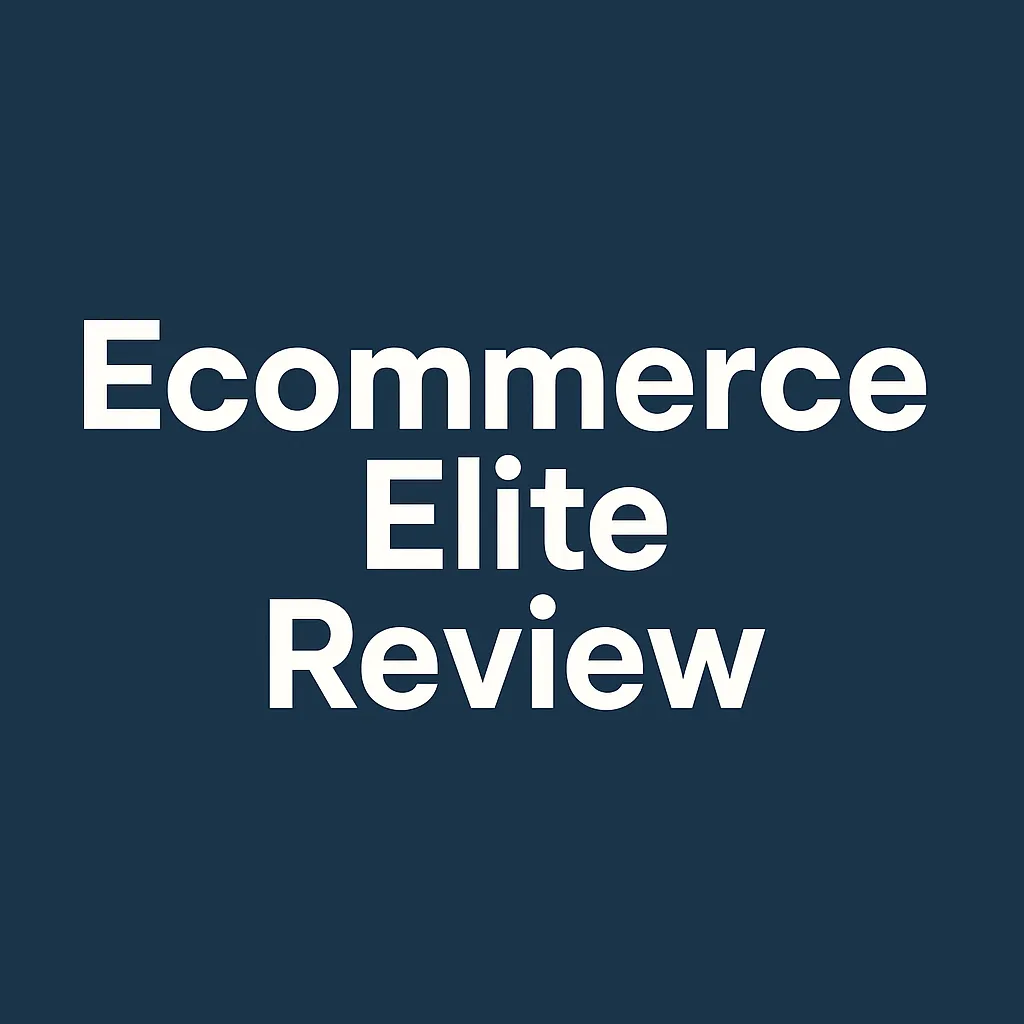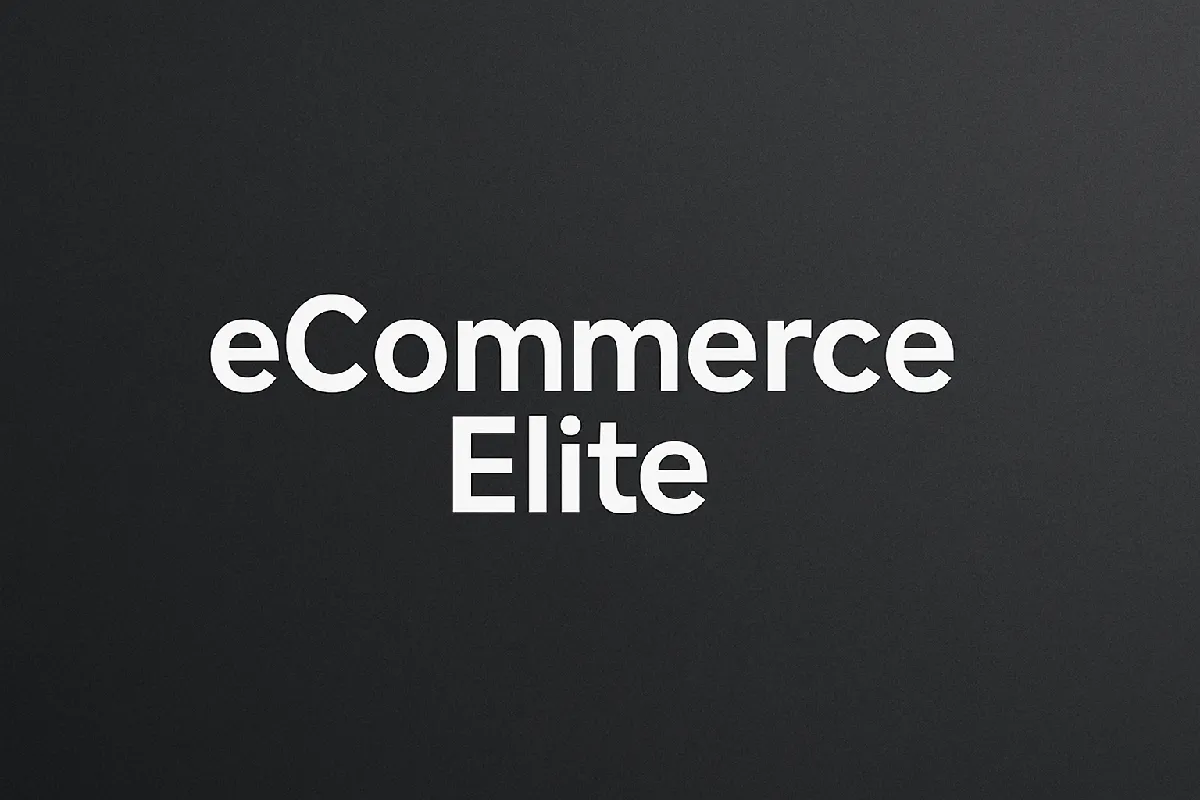eCommerce Elite Review - Here's My Experience With This Program
Welcome to this eCommerce Elite review. When I first landed on the funnel for this program through Mainstream Media Co, I was met with big promises — mainly about helping people build or fix their online stores fast.
The hook was a “free case study” video that introduced something similar to Lightning Reselling, hinting at how beginners could supposedly hit consistent daily profits with a few tweaks.

It was attention-grabbing, sure, but as I went deeper, I realized the structure wasn’t a standard course.
It’s more of a sales funnel designed to lead you toward a done-for-you or semi-done service.
The language focused heavily on outcomes — like making “$650 per day” — without offering much detail about how the process works behind the scenes or who’s running it.
That kind of setup always makes me cautious. Programs that hide the actual steps until after you’ve opted in or paid tend to rely on emotion rather than clarity.
Still, I don’t think it’s automatically a scam — it’s just unclear, and you’d need to ask specific questions before investing.
Pros
Strong marketing presentation and professional landing page
Promises practical e-commerce support for beginners
Free case study to preview the system
Cons
No clear pricing or curriculum upfront
Heavy emphasis on earnings claims without proof
Founder identity and credibility are vague
Possible connection to similar high-ticket “DFY” models with mixed reviews
If you’ve been around long enough, you know most people don’t fail in online business because they’re lazy.
They fail because they follow unclear systems with too many gaps. That’s what makes the difference between progress and confusion.
If you’d rather understand what separates a reliable system from a risky funnel, I share everything I’ve learned here.
What is eCommerce Elite?
After signing up through the funnel, I quickly realized this wasn’t a traditional course with modules or a member dashboard.
Instead, it’s structured more like a marketing funnel — the kind that collects your details first and then introduces a higher-ticket service.
The free “12-minute case study” acts as the entry point, but the real offer seems to come later through follow-up calls or emails.
From what I could gather, the main focus is on setting up or optimizing e-commerce stores, with claims that their system can help users “build a store that’s ready for sales.”
It’s positioned as a fast path for people who’ve struggled to make progress on their own.
The presentation feels sleek and confident, but there’s very little explanation about who actually builds these stores, what platform they use, or whether you retain ownership afterward.
They also lean heavily on the idea of automation — how your store could be generating results without needing advanced marketing skills.
That kind of language always makes me cautious because it sounds similar to other “done-for-you” setups that promise simplicity but often leave you responsible for key parts like ad spend, customer service, or product sourcing.
There’s also mention of proven funnels and templates, which might appeal to beginners who just want to plug in a system rather than build from scratch. But again, the details are vague.
I didn’t find a clear explanation of what’s included after you join — no breakdown of tools, training, or specific deliverables.
It’s possible there’s a legitimate service here behind the curtain, but from what I’ve seen, it feels more like a lead generation mechanism than an actual program with transparent curriculum and support.
If you’re considering it, you’d want to clarify everything — pricing, deliverables, ownership, and refund terms — before taking the next step.
My Personal Experience With eCommerce Elite

When I first came across the funnel, I didn’t expect it to feel so polished. The branding was clean, the layout was sharp, and the copywriting did a good job of making me curious.
After entering my email, I watched the so-called “free case study,” which was really a short, persuasive presentation designed to warm me up for a larger offer.
Right away, I noticed that it followed a pattern I’ve seen many times before — emotional storytelling, screenshots of supposed results, and big promises about quick income growth.
It was convincing at first, but as someone who’s reviewed dozens of e-commerce systems, I could tell that the real product wasn’t the video itself — it was what came after.
After submitting my details, I received a few follow-up messages inviting me to speak with a “specialist.” That’s when it became clear this wasn’t a simple course or one-time product.
It’s more of a sales funnel leading into a higher-ticket consultation or “done-for-you” store setup. I didn’t see transparent pricing, which immediately made me cautious.
Usually, when the price is hidden behind a call, it’s because it’s in the thousands.
There wasn’t much actual training material offered before the upsell, which was disappointing.
I was hoping for at least some insight into their methods, ad strategies, or store frameworks. Instead, I got general motivation and promises about speed and automation.
I didn’t end up booking the call, mainly because I prefer programs that outline everything upfront — what you get, what it costs, and how it’s delivered.
That said, I understand why this model appeals to some people. It’s convenient. The problem is that convenience often comes with limited control and unclear expectations.
If you’re at a point where you want to understand what separates clarity from confusion in online systems, you might want to check out what I’ve learned here.
Pricing and Additional Costs
One of the biggest challenges I had with this system was figuring out what it actually costs.
The front-facing offer doesn’t mention any pricing at all — not for the “free case study,” not for the setup service, and not for any future mentorship or store-building packages.
That usually means the pricing is shared only during private sales calls, which can be a red flag if you’re trying to make an informed decision.
Based on how the funnel is structured — and how similar e-commerce systems operate — I’d estimate the entry price to fall somewhere between $3,000 and $10,000 for a full “done-for-you” service. That might sound like a wide range, but that’s typical for these models.
They often start with a low-cost hook (a free video or a $47 training), and then gradually introduce higher-ticket tiers for store setup, ad management, or coaching.
Another thing to consider is that even if the initial setup is handled for you, there are still ongoing costs.
You’ll need to cover your Shopify plan, product inventory (if applicable), ad spend, and possibly subscription tools like email automation or analytics platforms.
Those recurring expenses can easily run 800 per month, depending on how aggressively you scale.
There’s also the question of ownership. Many “done-for-you” store builders retain access to your website or ad accounts until you’ve met certain milestones or payments.
That’s something you’ll want to clarify before signing anything. If you’re paying thousands for a service, you should always retain full ownership and admin rights from day one.
The lack of transparent pricing on the landing page doesn’t necessarily mean it’s a scam, but it does mean you’ll be walking in blind.
If you decide to explore it, ask for all the numbers upfront — total setup cost, monthly tools, expected ad budget, and refund terms. Transparency here is non-negotiable.
eCommerce Elite Pros
One thing I’ll give them credit for is presentation. The entire funnel looks professional — clean branding, clear copy, and a sense of polish that a lot of e-commerce offers lack.
It’s also beginner-friendly in the sense that you don’t need prior technical knowledge to follow along with what they’re promising.
The idea of having someone build or optimize your store for you can be appealing if you’re overwhelmed by the technical side of e-commerce.
I also liked that they introduced the process through a short “case study” video instead of a long sales webinar.
It makes the initial experience more digestible, and for people new to online business, it can provide a quick sense of direction — even if that direction ends up leading to a higher-ticket offer.
eCommerce Elite Cons
The downsides, however, are hard to ignore. The biggest issue is transparency. You don’t really know what you’re buying until after you’ve scheduled a call.
That makes it hard to compare it with other options or even decide if it fits your goals. There’s also the issue of vague claims — big promises about “daily profits” and “automated results” without any actual proof or student examples.
I also think it’s risky that there’s no visible information about the founders or their background.
You don’t know who’s running things, what their experience is, or whether they’ve built successful stores themselves.
And because of that, it’s impossible to verify the credibility of the service or the people behind it.
Lastly, the potential for upsells is another concern. When pricing is hidden, it usually means you’re being guided toward a much larger purchase later on.
Add in the recurring costs for ads, tools, and maintenance, and this could become a significant investment — one that might not make sense for beginners trying to keep expenses low.
Final Verdict
After digging through everything and seeing how the funnel operates, I’d say this system sits somewhere between a legitimate offer and a high-pressure sales mechanism.
It’s not outright deceptive, but it’s also not transparent enough to earn full trust right away.
The professional branding gives a solid first impression, but once you get past the surface, the lack of clear pricing, real testimonials, and identifiable leadership makes it hard to evaluate what you’re really getting.
From my perspective, this isn’t something I’d recommend jumping into blindly — especially if you’re new to e-commerce.
The done-for-you model might sound convenient, but it can also make you dependent on someone else’s system, leaving you with limited control and ongoing costs you didn’t expect.
If you already have some experience with online business and know how to ask the right questions — about ownership, refund policies, and deliverables — then it might be worth exploring further.
But if you’re just starting out and looking for a more predictable, transparent learning curve, there are safer ways to build from scratch.
I don’t think this program is automatically bad. It just feels like one of those offers that could either work well for the right person or turn into an expensive lesson for the wrong one.
That’s why I always recommend taking a step back before committing.
If you’re at the stage where you want to cut through the confusion and focus on systems that actually make sense long-term — not just quick setups or vague case studies — I’ve put together something that might help you see the difference.